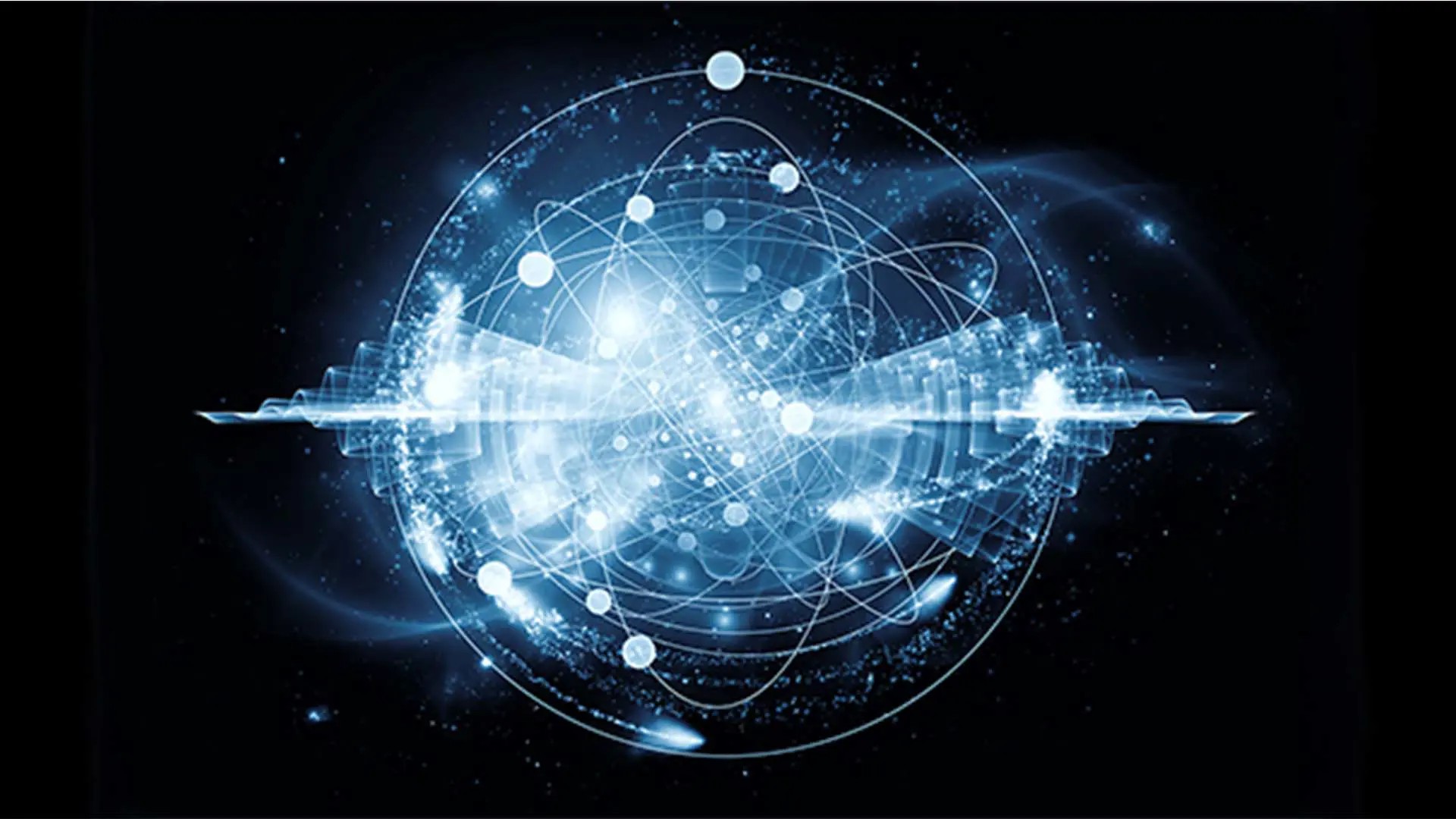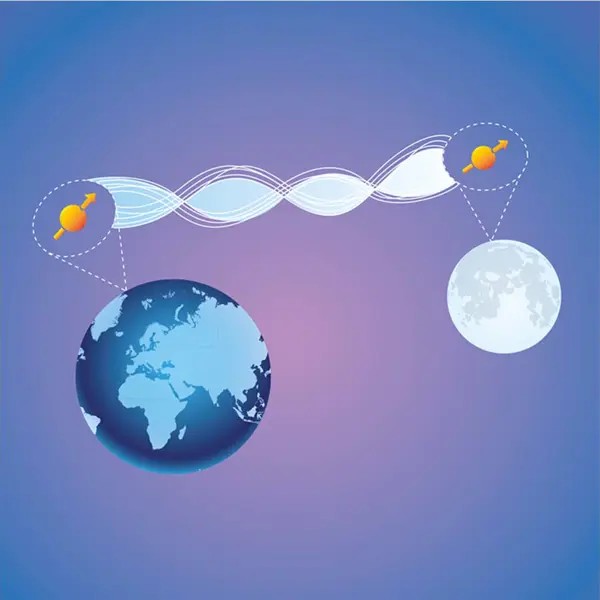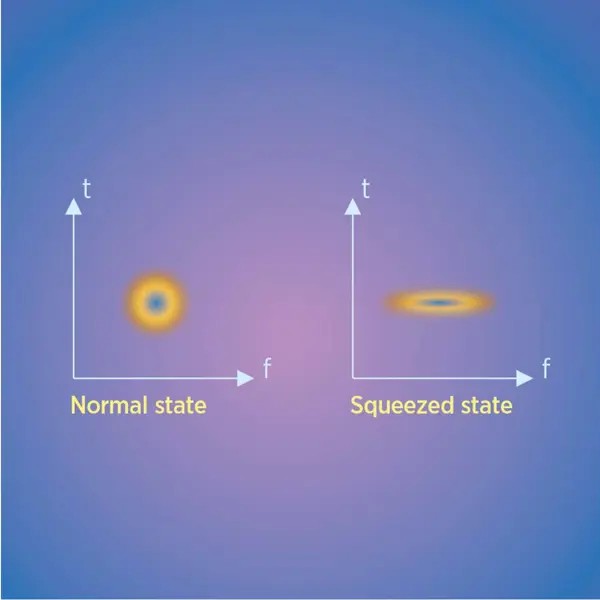
The quantum world – at the scale of atoms and below – is paradoxical and bizarre. Particles appear to simultaneously be both here and there, or mysteriously entangled at a distance. Quantum technology is about harnessing these strange phenomena to create brand new technology with extraordinary capabilities.
Podcast with WACQT researchers (Swedish)
Quantum mechanics emerged in the early 1900s to describe nature at the smallest scales. It predicts that the world at the most intimate and fundamental level is random and uncertain. This idea provoked intense philosophical debates and controversy in the early development of the theory. These debates also led to many different interpretations that defy our previous understanding of the world. Many scientists believed that the underlying reality must be deterministic. The persistent questioning of the theory led to discoveries of further aspects of quantum mechanics, such as quantum entanglement.
Quantum mechanics indeed predicts a mind-boggling world, which in many ways contradict our everyday-experiences. But the theory has been rigorously tested in many different ways, and experiment after experiment has confirmed that nature operates precisely in the way that quantum mechanics describes.
From theory to revolution
In the 1930s, the mathematical rigorous formulation of quantum mechanics was essentially complete, even though many of its consequences remained unexplained. The new understanding of quantum properties of light and materials led to the invention of the laser and the transistor – inventions that form the basis of today’s information technology. Computers, the internet and smartphones have drastically changed our lives. Today, we refer to this as the first quantum revolution. However, it was long regarded as impossible to control individual quantum systems such as single atoms, electrons or light particles (photons).
But in the 1980s, scientists managed to develop methods for measuring and controlling individual atoms and photons, work which awarded David Wineland and Serge Haroche the Nobel Prize in physics 2012. In parallel, other researchers developed electrical components in which they could manipulate single electrons.
The ability to exploit the properties of individual quantum systems opens the door to brand new technology. It’s not about incremental change but a real game changer, a second quantum revolution.
Scientists, policymakers and industrial leaders across the globe see the new revolution coming. The European Union, the United States, the UK, Japan, China, Australia, and Russia are all spending money at the billion-dollar scale to boost research in quantum technology. Many companies also put large efforts and money into quantum technology.
The counter-intuitive phenomena at the heart of quantum technology
The extraordinary capabilities of the emerging quantum products – that is, quantum computers way superior to today’s supercomputers, intercept-proof communications and hypersensitive measuring instruments – are all based on the almost-mystical phenomena of quantum mechanics. The most important are:
Superposition

If an electron were on skis, it would be absolutely normal for it to have its skis passing on different sides of a tree. In the world of quantum mechanics, it is fully possible for particles to be in many different places at once. Or to simultaneously have different energy, polarization, or any other state. A famous example is Schrödinger’s cat which is both dead and alive (in a thought-experiment, that is). These ambiguous states are called superpositions, and enables, for example, the amazing parallel computing power of quantum computers.
Entanglement

Superpositions can extend between several particles, a special type of such superpositions is called entanglement. A manipulation of one particle affects its entangled partner immediately – even if they are vastly far apart, and without any noticeable transfer of information.
”Spooky action at a distance,” said Einstein sceptically, but experiments have proved it to be correct. And while scientists still debate what entanglement really means, it has beome clear that it will play a key role in future systems for intercept-proof quantum communication.
Squeezed states

In quantum mechanics, the uncertainty principle limits how accurately one can simultaneously know the position and the velocity of an object. The same applies to other interlinked variables, such as time and frequency.
The uncertainty is normally split equally between the two interlinked variables. However, the quantum state of the object can be manipulated so that the uncertainty affects one of the variables more than the other. This is called a squeezed state, and can be used for enhanced precision in quantum sensing.
The big challenge
A classical analogy to a quantum superposition is a spinning coin. While the coin is spinning, it is in a combination of heads and tails. However, it will eventually succumb to the forces of its environment and fall on one side or the other.
The same is valid for quantum superpositions, but they are much more sensitive than spinning coins. Even the slightest disturbances cause the superposition to diminish and finally collapse. This process is called decoherence and is one of the greatest challenges to be faced in quantum technology. Why? Because there is an inherent contradiction between isolating a quantum system to avoid decoherence and the need to be able to manipulate it.
The four areas of quantum technology
In Europe, quantum technology is often grouped into four main areas: quantum computing, quantum simulation, quantum communication, and quantum sensing. Read more on their respective page:
Quantum computing
Quantum simulation
Quantum communication
Quantum sensing
Images
Chalmers and iStock by Getty Images